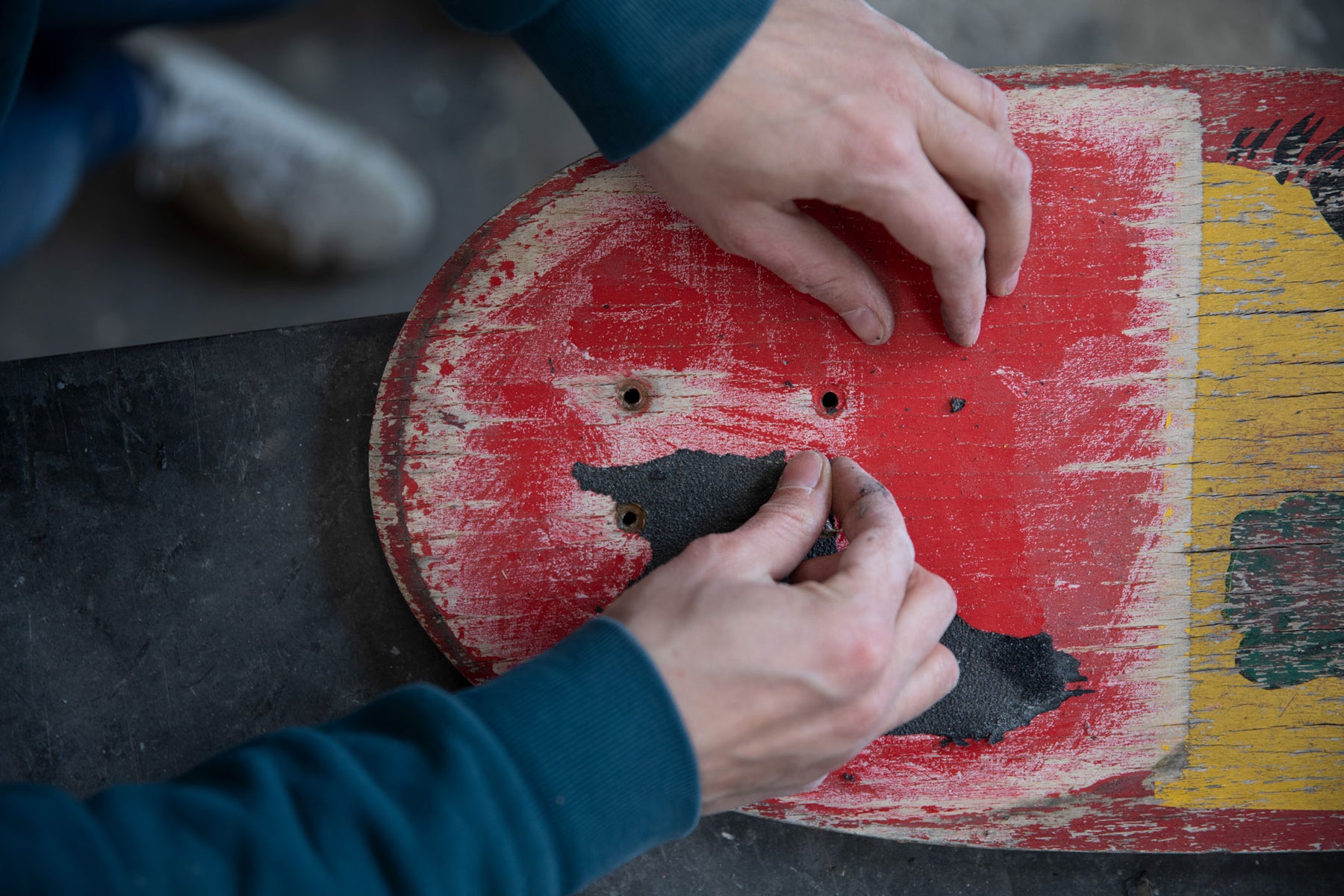
Art on Skateboards
Art framed by skateboards.
A little insight into the history of skateboarding and its connection with framed art.
It all originated from a do-it-yourself mentality with homemade skateboards in California in the 50s, which has survived to this day. Skateboarding did not evolve from an industry, but is an individual expression of life that has a subcultural origin: Using homemade boards to perform tricks for each other without competing or competing with each other - that was the original idea. Commercial manufacturing and production did not begin until the late 1950s in the United States.
Skateboarding is not a team sport, but rather an attitude, a lifestyle, a way of life. This intense desire for personal expression has also taken manifold influences on art, architecture, design, film, photography, sociology, and even fashion: Art on skateboard decks, artists who skate, photographers with their own limited skateboard collections, skateboarders who are also street artists or vice versa. Skateboarding is one of the few cultures that has not settled on a particular look, except for the early 90s. For example, street artist Robin Rhode says, "Today, skateboarding is an extension of my interests as an artist and my involvement with the subculture. But at the same time, there's a conceptual approach: I've always found skateboarding to be a way of redefining architecture. How do we perceive space? And how can we control it?" (Robin Rhode, Baunetz interior | design by Tim Berge, 11/14/2016)
Californian skateboarder Mark Gonzales "The Gonz" started drawing and painting parallel to professional skating. Many photographs of Kate Bellm show people dreaming, kissing and skating in bizarre landscapes with colorful gradients. Her photographic works on decks or street art motifs by Victor Ash in limited editions are just a small sample into the world of art on skateboards.
Aside from these high-dollar artist collections, decks are of course meant for the street: to use, to skate. But that time is finite, the memories endless. All the little quirks, scratches and signs of use, an eye-catching graphic on the skateboard that may represent a certain time or region, make a used board a small personal witness of time. The many memories associated with a skateboard, let it itself already become a unique specimen. Discarded skateboards are probably therefore rather rare to find, but unused piles of discarded decks in living rooms of passionate skateboarders much more common. Hands top left and bottom right picture frame corner held together with frame clamp Building a picture frame from an old skateboard is a little more involved in preparation or takes a little more effort than other unused wood products we usually build frames from. The first step is to remove the grip tape from the deck surface. This is a time-consuming manual work, after which only the cleaned wood remains. The subsequent maximum frame size is determined by the skateboard size itself. Some offcut must be included: on the two rounded sides, which must be cut straight. Broken, swollen or very damaged edges are corrected so that the later assembly of the four strip parts is accurate. When cutting the individual strips from a deck, the typical layering of several layers of wood from a board becomes visible. At first it seems a subtle detail compared to the usually more striking and very colorful surface. Later in the room, hanging on the living room wall, it unfolds its visual power and is much less subtle than perhaps still assumed in manufacturing. This is a unique feature and distinguishes a skateboard frame molding significantly from other upcycled picture frame mou
Aside from these high-dollar artist collections, decks are of course meant for the street: to use, to skate. But that time is finite, the memories endless. All the little quirks, scratches and signs of use, an eye-catching graphic on the skateboard that may represent a certain time or region, make a used board a small personal witness of time. The many memories associated with a skateboard, let it itself already become a unique specimen. Discarded skateboards are probably therefore rather rare to find, but unused piles of discarded decks in living rooms of passionate skateboarders much more common.
Building a picture frame from an old skateboard is a little more involved in preparation or takes a little more effort than other unused wood products we usually build frames from. The first step is to remove the grip tape from the deck surface. This is a time-consuming manual work, after which only the cleaned wood remains. The subsequent maximum frame size is determined by the skateboard size itself. Some offcut must be included: on the two rounded sides, which must be cut straight. Broken, swollen or very damaged edges are corrected so that the later assembly of the four strip parts is accurate. When cutting the individual strips from a deck, the typical layering of several layers of wood from a board becomes visible. At first it seems a subtle detail compared to the usually more striking and very colorful surface. Later in the room, hanging on the living room wall, it unfolds its visual power and is much less subtle than perhaps still assumed in manufacturing. This is a unique feature and distinguishes a skateboard frame moulding significantly from other upcycled picture frame moulding.
What unused decks do you have lying around your living room?


Leave a comment